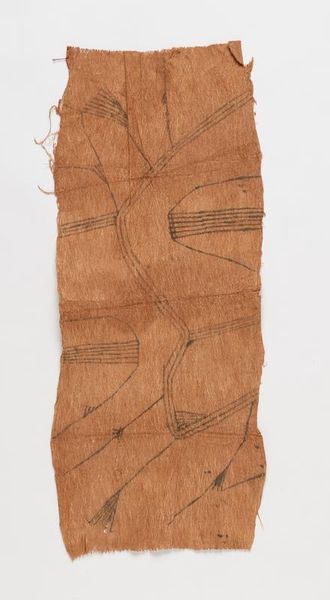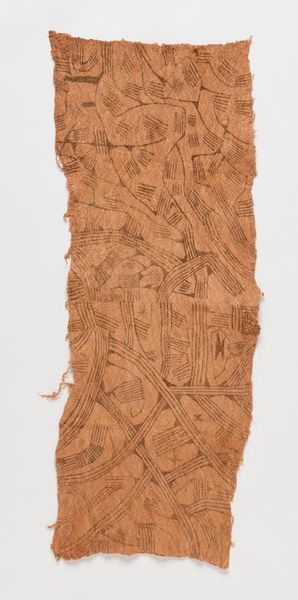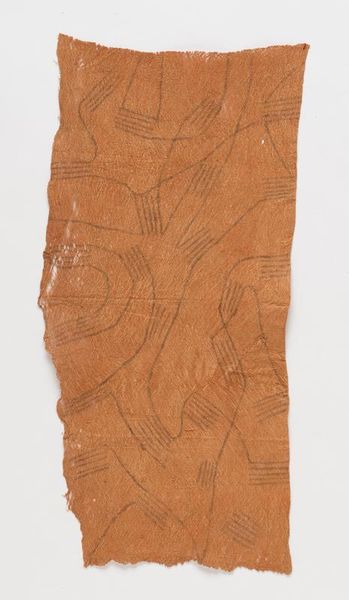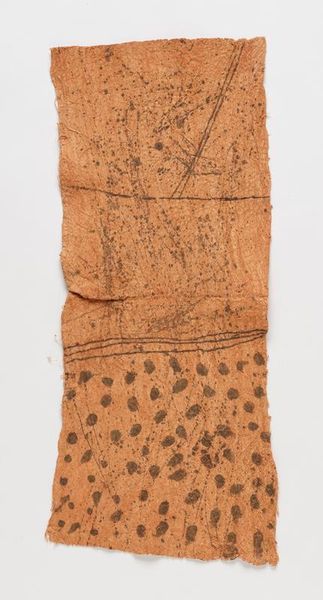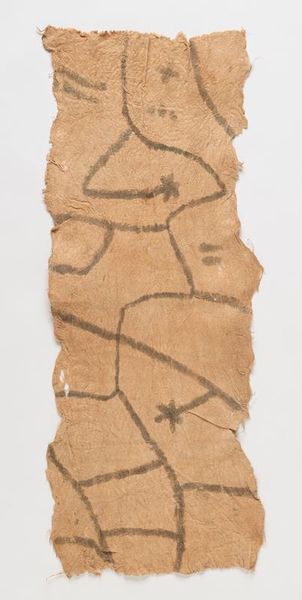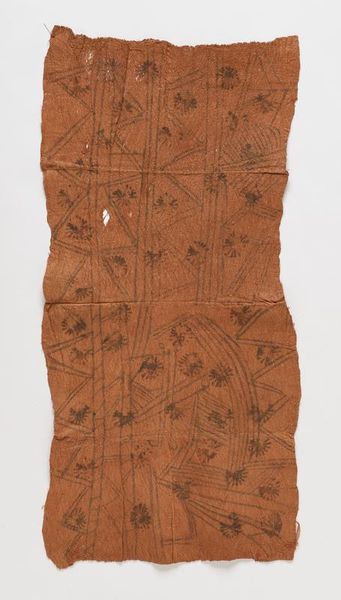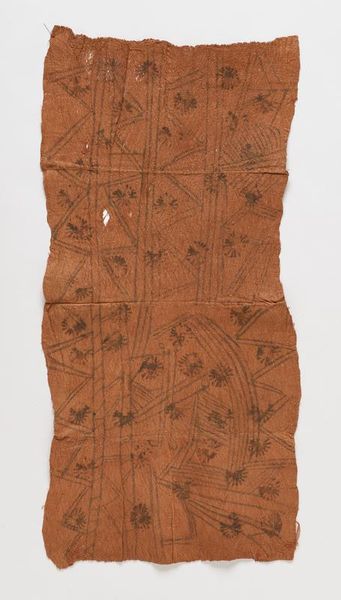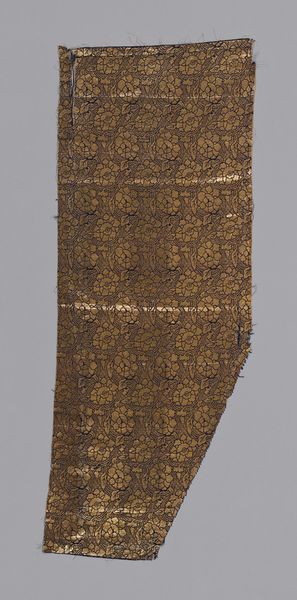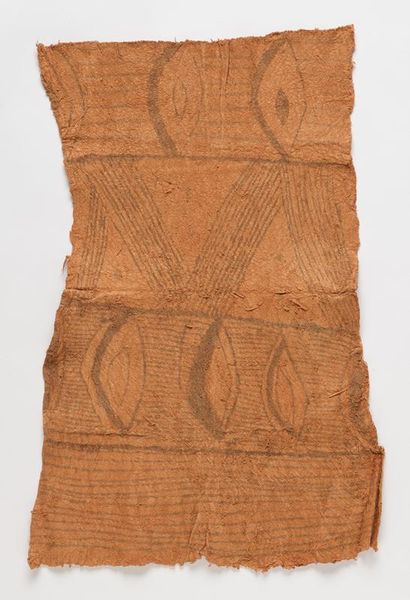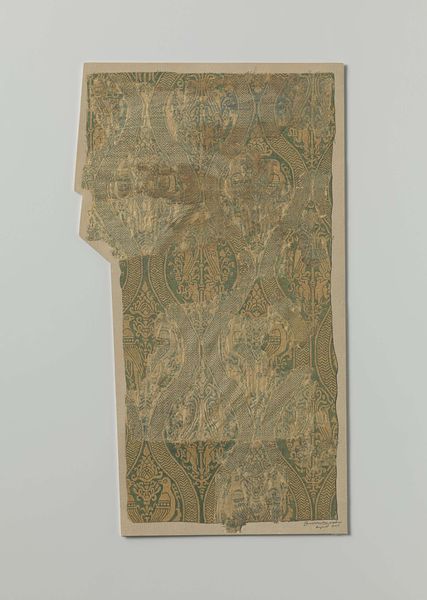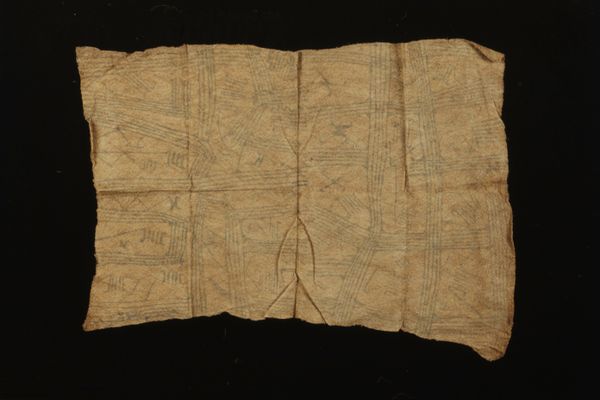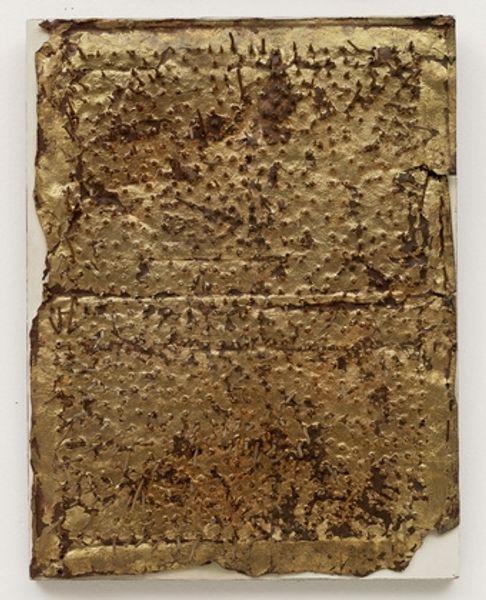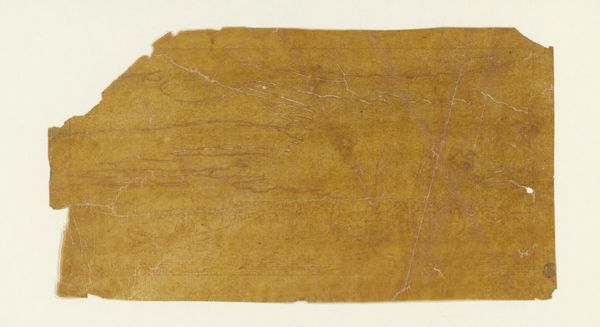
drawing, panel, pigment, textile, paper, ink
#
african-art
#
drawing
#
panel
#
pigment
#
textile
#
figuration
#
paper
#
ink
#
line
#
mixed medium
Dimensions: 29 13/16 × 15 in. (75.72 × 38.1 cm)
Copyright: No Known Copyright
Curator: This is a barkcloth panel created around 1930 by an artist of the Mbuti people. The medium is intriguing; it's ink and pigment on textile—barkcloth, specifically. Editor: It's quite striking. The rough texture of the material gives it a very raw, almost primal feel. The muted palette, predominantly brown and black, adds to the somber, grounded mood. Curator: Absolutely. The Mbuti, an indigenous group from the Ituri Rainforest in the Democratic Republic of Congo, often used barkcloth for clothing, bedding, and ceremonial purposes. Editor: Looking at the lines, one notes the almost rigid formalism with a set of simple repeated vertical and angular strokes in black ink, creating geometric forms that seem to interact. Curator: These aren’t mere geometric patterns, though. Historians suggest they often contain figuration, referencing aspects of their environment and societal structure. Editor: Ah, I see a human profile hidden amongst the repetitive markings. How cleverly disguised; it emerges quietly from the broader composition. The lines themselves take on added resonance by suggesting more than their geometric properties. Curator: Indeed. These panels served, at least partially, as a means to preserve their cultural traditions during a time of considerable societal change. Colonial authorities impacted how they traditionally lived and so, these pieces had considerable significance beyond daily utility. Editor: So, beyond its formal components, the barkcloth also carries a weighty narrative. We understand the object goes past a basic aesthetic assessment when seen against that historical setting. Curator: Exactly, its very existence pushes back against dominant narratives. Editor: Looking at it again, it presents a surprisingly refined simplicity for such a layered background. Curator: The artist used limited means to record and convey communal information, to push against larger social forces. Editor: An economical approach that adds considerable weight to this rather understated visual statement. Well, a piece that has many intriguing ideas about material, form, and meaning!
Comments
minneapolisinstituteofart about 2 years ago
⋮
Mbuti men collect pieces of the inner layer of tree bark, soak them in water, and pound them until they are thin and pliable. Mbuti women then use twigs or their fingers to decorate these canvases with intricate designs that show repetitions of a single element or various groups of motifs. The Mbuti people live in the Ituri rainforest in the northeastern Democratic Republic of Congo, and the abstract imagery in their art expresses the shapes and motions of their natural environment. The barkcloth paintings can be seen as maps of the forest, invoking trails and webs, insects and animals, leaves and shelters. Yet these visual compositions also refer to the language of Mbuti music, characterized by syncope, free improvisation, and polyrhythm. As such, the painted barkcloths become graphic soundscapes, rendering a multitude of sonic events in conjunction with silence, captured by the paintings’ negative space.
Join the conversation
Join millions of artists and users on Artera today and experience the ultimate creative platform.
